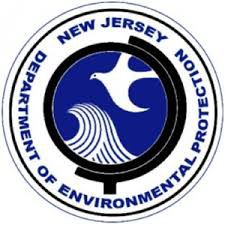Mercer, Middlesex and Somerset counties are among 14 counties in New Jersey that have been placed under a drought warning due to a lack of rain and “deteriorating water supply conditions,” according to the state Department of Environmental Protection.
The goal of the drought warning is to preserve and balance available water supplies in an effort to avert more serious water shortages in the future, the DEP said in a statement on Friday. The warning also elevates the need for residents and businesses in impacted counties to reduce their water use.
DEP Commissioner Bob Martin signed an Administrative Order designating a drought warning for Bergen, Essex, Hudson, Hunterdon, Mercer, Middlesex, Monmouth, Morris, Ocean, Passaic, Somerset, Sussex, Union and Warren counties.
This designation enables the DEP to more closely manage reservoir systems by directing water transfers among systems, controlling releases from reservoirs, and modifying the rate of flow in streams and rivers in order to balance ecological protection and needs of water suppliers.
“The situation in our reservoir systems that serve some of the most densely populated regions of New Jersey is becoming more critical, with some systems dropping to half their capacity or less,“ Commissioner Martin said. “Without knowing how much precipitation we are going to get over the fall and winter to replenish our water sources, it is vital that every resident and business step up efforts to voluntarily reduce water use in the hopes of averting a water emergency and mandatory restrictions.“
The Administrative Order signed by Commissioner Martin establishes a formal process for the DEP to work with water suppliers in affected regions to ensure no single water supplier or region faces a significant shortfall should dry weather and high customer demand continue.
The DEP has been consulting with water suppliers for months to assess conditions and ensure they are fully aware of the situation and are ready to cooperate with the DEP.
The DEP utilizes indicators to gauge the impacts that a shortfall of precipitation has had on water supplies, including reservoir levels, stream flows, and levels in shallow groundwater sources, known as unconfined aquifers, which is important in the longer-term replenishment of streams and reservoirs.
The northern tier of the state, in particular, has been grappling with below-normal precipitation. In this area, precipitation deficits for the past 12 months are as much as 12.7 inches below normal.
Major reservoir systems are below their normal levels for this time of year, and will likely need transfers of water through interconnected infrastructure to balance storage.
The DEP offers the following tips to reduce water use:
• At this time of year, it is appropriate to let lawns go dormant.
• Turn sprinkler systems off automatic timers.
• Use a hose with a hand-held nozzle to water flowers and shrubs, or let them go dormant.
• Use a broom to sweep the sidewalk, rather than a hose.
• Wash vehicles with a bucket and do not run the hose more than necessary, or use a commercial car wash that recycles water.
• To save water at home, fix leaky faucets and pipes. Consider replacing toilets with a low-flow version; this can save around 11,000 gallons per year.
• Upgrade your showerhead to low-flow versions, which can save some 7,700 gallons per year.
• Upgrade your faucets or install faucet aerators; this can save some 16,000 gallons per year.
For more state water supply status information and to view the Administrative Order, visit: www.njdrought.org
For more detailed information on water conservation technologies and interesting facts, visit:www.nj.gov/dep/watersupply/conserve.htm

